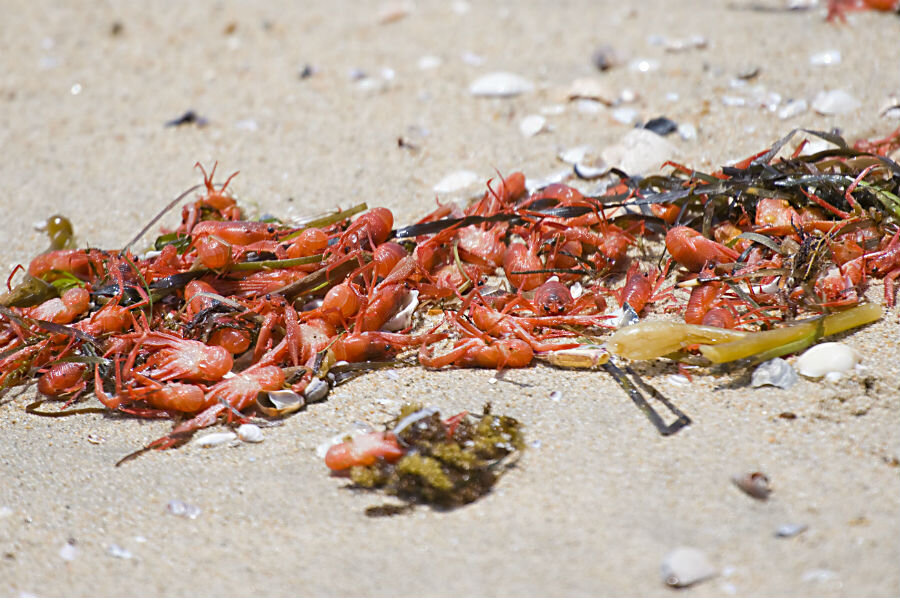Why are hundreds of tiny red crabs swarming California beaches?
Loading...
Southern California has been invaded by a swarm of crimson crabs, scrambling from the ocean to carpet the shoreline in a writhing mass of crustacean critters.
It is not the first assault by these bright red "tuna crabs," which resemble mini lobsters about two inches long. And the thousand or so that washed up on two beaches Wednesday are nothing when compared with last June's incursion of hundreds of thousands all along the coastline.
Nevertheless, the unfamiliar sight was "shocking" to some of the ramblers on Imperial and Huntington beaches, unprepared to face an army of snapping sea creatures.
"I got pinched by one," Katie Glover, who was visiting the area for the first time from Los Angeles, told The Orange County Register. "It was on my foot. We were walking, and my little Yorkie ran past it and cried. I think he got pinched by one first."
The tuna crabs, also known as "pelagic red crabs," or Pleuroncodes planipes, normally reside in warmer waters to the south, off Baja California, but in recent years their sudden appearance along swathes of the Californian coast has become more common.
"Just like last year, in June we had a washing of tuna crabs and they think its correlated with El Niño," Imperial Beach Lifeguard Captain Robert Stabenow told San Diego's CBS affiliate. "The warmer waters are pushing them up and when they hit the cold waters of San Diego, they die off."
Many experts concur, suggesting that warm southern currents may push the crabs beyond their regular range. During stronger El Niño events, in particular, they can appear in abundance off Southern and Central California.
"They occur in vast pelagic swarms and can be found washed up on local beaches in large numbers," as the Scripps Institution of Oceanography, UC San Diego, reports.
The tuna crab is not alone, however, in being a nonnative animal gracing the waters off California. Recent years have brought a plethora of visitors, including "blue marlin, whale sharks, wahoo, yellowfin tuna, manta rays and by-the-wind sailors – a blob-like jellyfish that skims along the surface of the ocean," the Los Angeles Times reports.








